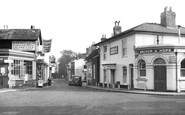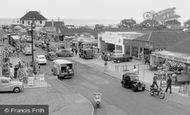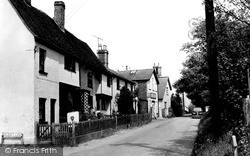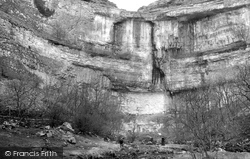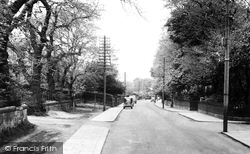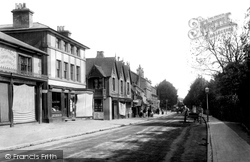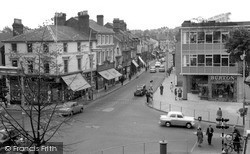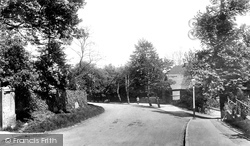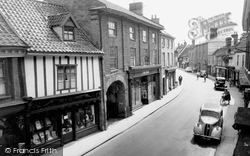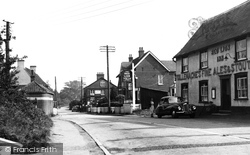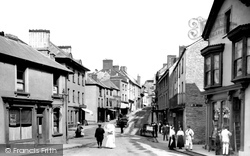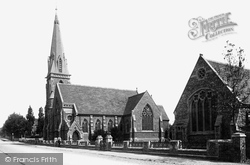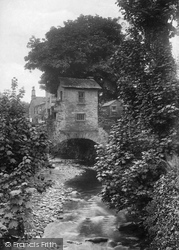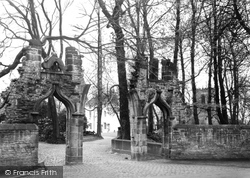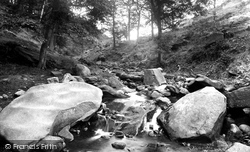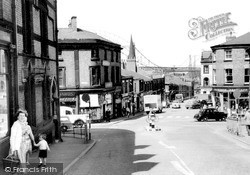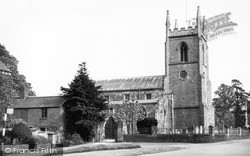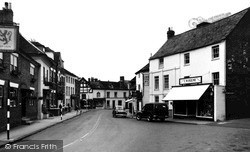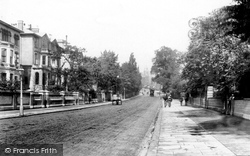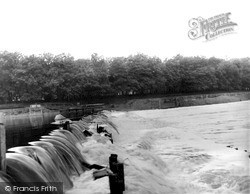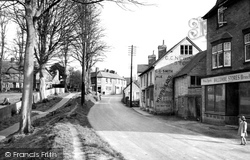Places
Sorry, no places were found that related to your search.
Photos
Sorry, no photos were found that related to your search.
Maps
Sorry, no maps were found that related to your search.
Books
Sorry, no books were found that related to your search.
Memories
3,644 memories found. Showing results 391 to 400.
Training To Be A Bricklayer
During my chidhood I was to perform lots of different tasks that would make life for my mother a little easier. I did not know it at the time but she was actually training me for my working life. Not ...Read more
A memory of Intake in 1951 by
Melrose Cottage 8 Shalbourne
In the 1950s and early 1960s my brother and I were fostered to a Miss Little and her sister at 8 Shalborne, there were several children living there and I have many fond memories of our stay. We used to sleep in a ...Read more
A memory of Shalbourne by
Newbottle Village
I remember coming from school and running up to the hillside fields helping Wheightman to load the hay onto his tractors and building the haystacks on North Pasture, off down to the yard pond looking for frogs and ...Read more
A memory of Newbottle in 1956 by
Bonfire Night In Teesdale Road In 1955/56
Can anyone remember the Guilders living in Teesdale Road in 1955/56? It was fun the group of 4 quarters watching fireworks from inside, and eating jacket potatoes and parkin made by mom..mm...
A memory of Catterick in 1955 by
Armagh 1957 Onwards
I get a lovely glow when I think of my dear Armagh in the 1950s. Life seemed so good and simple then. I would spend my days roaming free letting my imagination grow as children do. I played down in the river by the Legar ...Read more
A memory of Armagh in 1957 by
My Childhood Days Brynna Boy
8 Southall Street /16 Tan-y-Bryn. We, the Brynna Boys, used to run to school, Mr & Mrs Davies Head Master and thei two daughters, strict and friendly, firm and kind. I can only describe those happy days, Coronation ...Read more
A memory of Brynna in 1953 by
My Nan Agnes Conor
I am trying to trace anyone who might have any history about the Conor family who lived at 14 Queen Street, Darlington in 1909. That year my nan was born to Sarah Jane Conor. She also had a daughter Elizabeth who was ...Read more
A memory of Darlington in 1900 by
School St In The Fifties
Hi Jacqueline, I lived at 9 School Street. My name is Mike Hawkins and I was born in 1947. I think your name was Burgess and your brother Tommy was my childhood best friend. He moved to Welwyn Garden City and I never saw ...Read more
A memory of Salford in 1950 by
Leeson S School
I remember going to Leesons (Private School). It was run by Mr and Mrs Leeson with the assistance of their daughter Joy - sadly it was closed many years ago and there is a developement of several houses built on the site ...Read more
A memory of Hythe in 1955 by
Where Is St. Patricks Open Air School?
Did you go to St. Patricks Open Air School? I was sent in 1957 as I had very bad asthma and I left in 1965. The school was open to about a hundred girls who suffered from a range of chest conditions. The ...Read more
A memory of Hayling Island in 1957
Captions
1,151 captions found. Showing results 937 to 960.
Beecroft Lane runs opposite the lane that leads to the church at Church End.
Once water cascaded over this 240ft-high limestone cliff, but now it runs underground from the Tarn before it reaches this point.
Brotton is another settlement with an ancient history; it was also seriously influenced by the ironstone industry at a later date.
This is the same scene as photograph No 37890 in the opposite direction, four years later, revealing the rich assortment of buildings and businesses which had developed along this stretch of the main
Earlier pictures of Evesham Street show Cranmore Simmons on the corner, a family-run furniture business established by Alfred Simmons in the 1920s.
As well as excursions up the Fal, ferries operated to Flushing and St Mawes Castle. Larger excursion steamers were employed on runs to the Lizard and Penzance.
This one, with the beck running through it, was built up in the 19th century to house workers at the nearby mill, where for a hundred years John Wilford & Sons produced linen, flax and wool.
It all looks neater now, and the trees have been thinned. Nothing new architecturally has been added.
Before the by-pass this was the main road through the town; it is now pedestrianised.
The Red Lion changed its name to The Venture (a ship) in 1997. The 1880s red brick house beyond with veranda under the gable was part of the Berners' estate at Woolverton Hall.
This street is a short one, running up into the town after crossing the Usk. The motor car is not yet a common sight, hence the horse-drawn carts going about their business.
This photograph shows the shops on the other side of the street from E167019. On the comer (right) we have Delbridges. The nearest building on the right was originally Lloyds Bank.
Conduit Road runs north from Ock Street on the east side of the Albert Park estate, and the earliest buildings on it are this church group.
Straddling Stock Ghyll, which runs by the side of the main road, this curious little structure is probably the best-known feature of Ambleside.
The name 'Croston' means 'town with a cross'.
This shows the town, the railway and the headland. The first station had been provided only 20 years before.
This stream, the Lode Pit Beck, flows off the moor into the Aire at Shipley. A former drovers' track took trade over the hills to Ilkley and Otley.
The top of the High Street was known officially as Devonshire Place, but the locals always called it Devonshire Square, even though it only had three sides.
Close to the road, the solid but impressive ashlar tower dominates the immediate street scene with its substantial angled buttresses and crocketted finials; these are not 15th-century, but were added
The main shopping areas of Broad Street and Church Street have not changed too much in character since the camera clicked on this scene.
The camera looks towards Hampstead High Street, formerly Red Lion Hill.
East of the village, the Shelford Road climbs on to the red sandstone hills, which are undercut by the River Trent to form river cliffs.
This village is noted for its beautiful woods, a railway tunnel under the Balcombe Forest and a brick viaduct over the Ouse valley. The church of St Mary was built in 1847.
In 1792, a company was formed by Lancaster merchants to build a canal; they saw it as a way of getting cheap coal from Wigan and transporting other goods out into towns in the heart of Lancashire.
Places (0)
Photos (0)
Memories (3644)
Books (0)
Maps (0)


